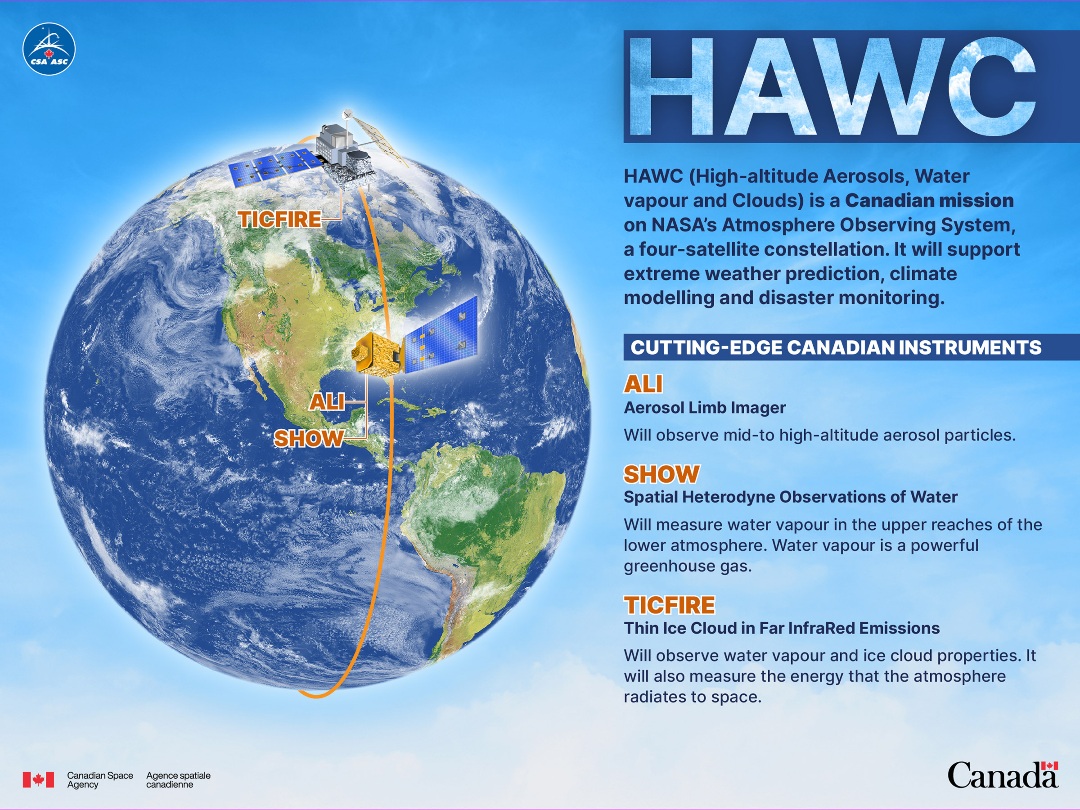
USask researchers co-lead climate science satellite mission with Canadian Space Agency and NASA
Two University of Saskatchewan (USask) researchers are leaders of a national team developing three new climate science satellite instruments that will be launched into space as part of a large NASA satellite mission designed to deliver key data for improved forecasts of weather, air quality, and climate.
“This project highlights the contribution our university is making through national and international collaboration to meet global challenges and conduct research the world needs,” said USask President Peter Stoicheff.
Thirteen universities from across Canada are participating in the project, pooling resources and expertise in collaboration with the Canadian Space Agency (CSA), Environment and Climate Change Canada, and the National Research Council of Canada, along with Canadian aerospace companies with expertise in optics and satellite technology.
HAWC will respond to the need for efficient and accurate data that will help make evidence-informed decisions to combat climate change. Improving weather prediction data will help Canada and regions around the world to prepare for extreme events such as winter storms, wildfire smoke plumes, heavy precipitation and volcanic eruptions.
“Our talented researchers working at the leading edge of scientific innovation in key areas like satellite remote sensing, sustainable water management, and climate disaster mitigation are making a difference to people and communities around the world,” said USask Vice-President Research Baljit Singh.
The instruments SHOW (Spatial Heterodyne Observations of Water) and ALI (Aerosol Limb Imager) will be developed by the USask contingent of the HAWC project and in collaboration with Canadian aerospace industry partners. These two satellite instruments, focused on aerosol and water vapour measurements, will be led by College of Arts and Science Department of Physics and Engineering Physics and Institute of Space and Atmospheric Studies professors Dr. Adam Bourassa (PhD) and Dr. Doug Degenstein (PhD).
HAWC will integrate the efforts of industry and universities, training and retaining highly qualified personnel, and creating new employment.
Other universities involved in the project are the Université du Québec à Montréal, University of Toronto, McGill University, University of New Brunswick, University of Sherbrooke, University of Waterloo, Wilfrid Laurier University, St. Francis Xavier University, Saint Mary’s University, University of Victoria, Dalhousie University, and the University of Western Ontario.

